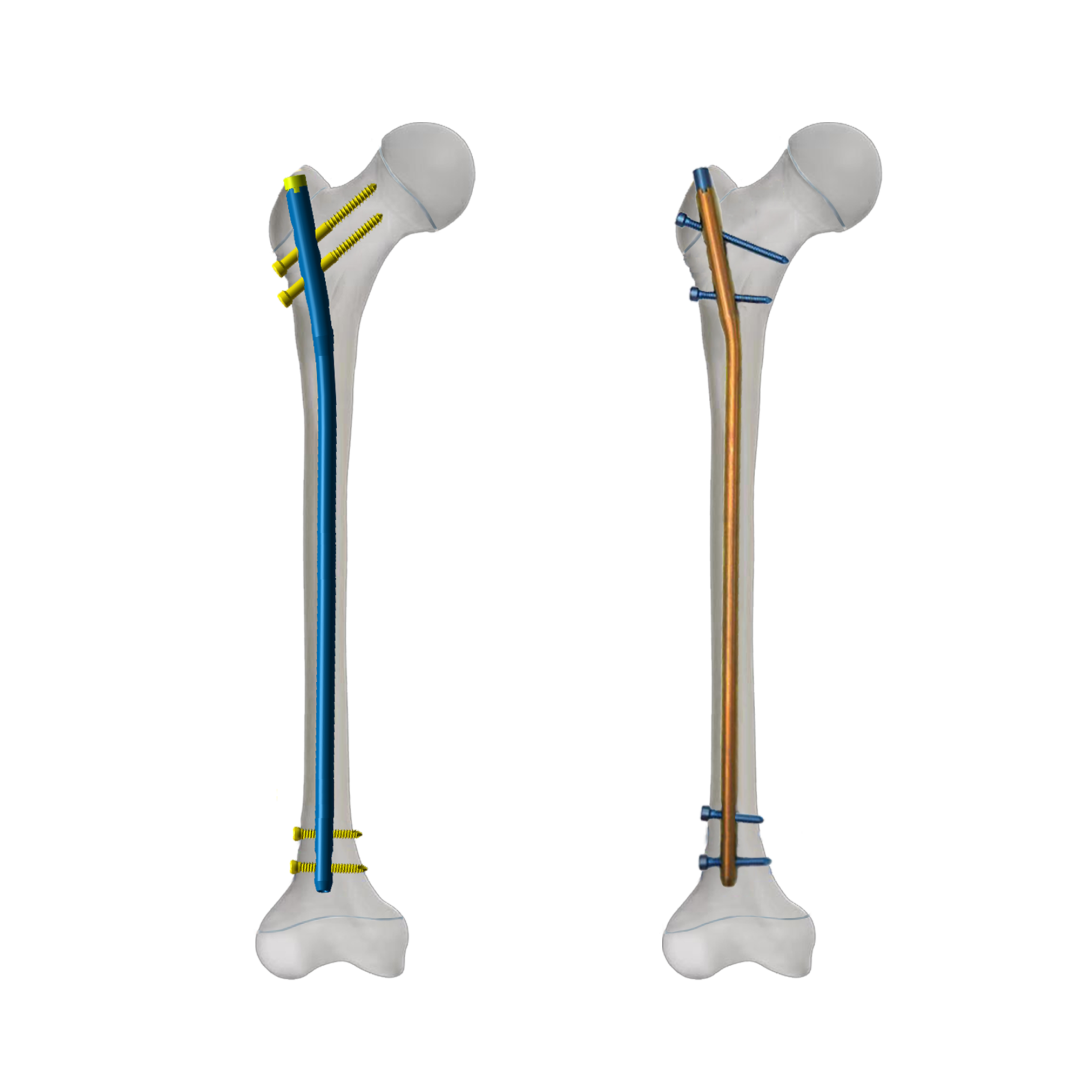Tanım
Adolescent Femoral Interlocking Nail
Q&A
1. Çeyrek: What is the primary indication for using an adolescent femoral interlocking nail compared to adult systems?
A1: It is specifically designed for older children and adolescents (typically 8-16 years) with femoral shaft fractures who are too large for elastic stable intramedullary nailing (DİN) but have insufficient skeletal maturity for standard adult nails, particularly to avoid damage to the proximal femoral growth plates.
2. Çeyrek: How does the design specifically address the unique anatomy of the adolescent femur?
A2: Key design features include:
Smaller diameter and shorter lengths matching adolescent femoral dimensions
Proximal curvature accommodating adolescent hip anatomy
Specialized lateral entry points avoiding the piriformis fossa and reduces the risk of injury to the femoral head blood supply, minimizing the chance of avascular necrosis.
Lower profile locking options minimizing soft tissue irritation in smaller limbs
3. Çeyrek: What material is the pediatric femur nail made from?
A3: It is commonly made of titanium alloy (Ti-6Al-4V) for high strength, flexibility, and biocompatibility suitable for growing patients.
4. Çeyrek: How does the biomechanical stability compare to other pediatric fixation methods?
A4: It provides superior stability to ESIN for length-unstable or comminuted fractures in larger adolescents, while being less invasive than plate osteosynthesis. The interlocking mechanism controls rotation and length effectively.
S5: What is the advantage of Adolescent Femoral Interlocking Nail over flexible nails?
A5: Adolescent Femoral Interlocking Nail provides stronger rotational and axial stability, allows early mobilization, and is suitable for heavier or older adolescents where flexible nails may not offer enough support.
S6: What are the available diameters and lengths?
S6: Diameters usually range from 7/8/9/10 mm, lengths vary from 200 mm to 420 mm,left and right configurations with anatomical curvature to accommodate different patient sizes.
S7: Why use a lateral entry instead of a piriformis entry nail?
A7: Lateral trochanteric entry point to avoid the medial vascular supply and growth plate. The approach requires careful dissection and image intensification to ensure proper starting position.
S8: How does postoperative management differ from adult nailing?
A8: Key differences include:
Shorter protected weight-bearing period (4-6 weeks typically)
Strict activity restrictions to prevent hardware failure
Regular radiographic monitoring for healing and implant position
Planned early removal once fracture consolidation occurs
Q9: What are the specific technical challenges during insertion?
A9: Surgeons face:
Precise entry point creation in dense bone
Careful reaming to preserve bone stock while achieving adequate fit
Accurate interlocking in often dense metaphyseal bone
Proper nail seating to avoid prominence while ensuring stability

